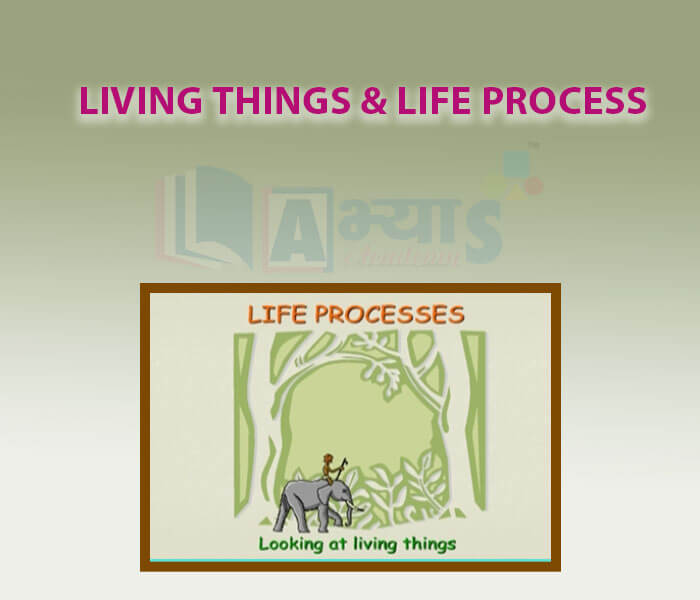Living Things and Life Process












Living Things and Life Process
All living things have an organized cellular structure with different levels of organization. An arranged and ordered structure with cells, tissues, organs, organ systems, etc is an important feature that distinguishes the living from the non - living. If this organization breaks down, an organism is no longer alive as organization is not only confined to external appearance but is present in the internal structure as well. Therefore, living things have to repair and maintain their structure through various processes.
Living Things and Life Processes
· The growth of a living organism starts with the division of its cells. When a cell divides, it forms two daughter cells from a single mother cell. The daughter cell divide and redivide to give rise to tissue and organs, Different life processes of an organism like growth and maintenance, require energy which is obtained from food by the process called ‘ nutrition’.
· Food is broken down into simpler forms by a stepwise oxidizing – reducing process known as ‘respiration’. During this process, oxygen is commonly required by organism to release energy from the food for carrying out various life processes.
· In multicellular organism, all the cells are not in contact with the environment. So, food and oxygen have to be transported to all parts of the body. For the movement of food and oxygen from one part to other, there is transportation system. The carrying out of different life processes involves ‘metabolism’ (chemical reactions in organism) which produces harmful waste products that have to be removed from the bodies of living organism through the process of ‘excretion’. In complex organism, specialized tissues system carries out excretion and specialized transportation system carries metabolic products to the excretory tissues.
The breakdown of pyruvate to give carbon dioxide, water and energy takes place in _____________ | |||
| Right Option : B | |||
| View Explanation | |||
In bigger bodies there are a large number of cells whereas in some organisms there is only one cell. The cell can be seen ____________________ | |||
| Right Option : B | |||
| View Explanation | |||
Life processes are important to carry out daily life activities. There are _________________ life processes which every living thing has | |||
| Right Option : D | |||
| View Explanation | |||
Students / Parents Reviews [10]
My experience with Abhyas academy is very good. I did not think that my every subject coming here will be so strong. The main thing is that the online tests had made me learn here more things.

Hiya Gupta
8thIt has a great methodology. Students here can get analysis to their test quickly.We can learn easily through PPTs and the testing methods are good. We know that where we have to practice

Barkha Arora
10thMy experience was very good with Abhyas academy. I am studying here from 6th class and I am satisfied by its results in my life. I improved a lot here ahead of school syllabus.

Ayan Ghosh
8thAbout Abhyas metholodology the teachers are very nice and hardworking toward students.The Centre Head Mrs Anu Sethi is also a brilliant teacher.Abhyas has taught me how to overcome problems and has always taken my doubts and suppoeted me.

Shreya Shrivastava
8thAbhyas Methodology is very good. It is based on according to student and each child manages accordingly to its properly. Methodology has improved the abilities of students to shine them in future.

Manish Kumar
10thIt was a good experience with Abhyas Academy. I even faced problems in starting but slowly and steadily overcomed. Especially reasoning classes helped me a lot.

Cheshta
10thMy experience with Abhyas is very good. I have learnt many things here like vedic maths and reasoning also. Teachers here first take our doubts and then there are assignments to verify our weak points.

Shivam Rana
7thOne of the best institutes to develope a child interest in studies.Provides SST and English knowledge also unlike other institutes. Teachers are co operative and friendly online tests andPPT develope practical knowledge also.

Aman Kumar Shrivastava
10thAbhyas is a complete education Institute. Here extreme care is taken by teacher with the help of regular exam. Extra classes also conducted by the institute, if the student is weak.

Om Umang
10thA marvelous experience with Abhyas. I am glad to share that my ward has achieved more than enough at the Ambala ABHYAS centre. Years have passed on and more and more he has gained. May the centre flourish and develop day by day by the grace of God.
